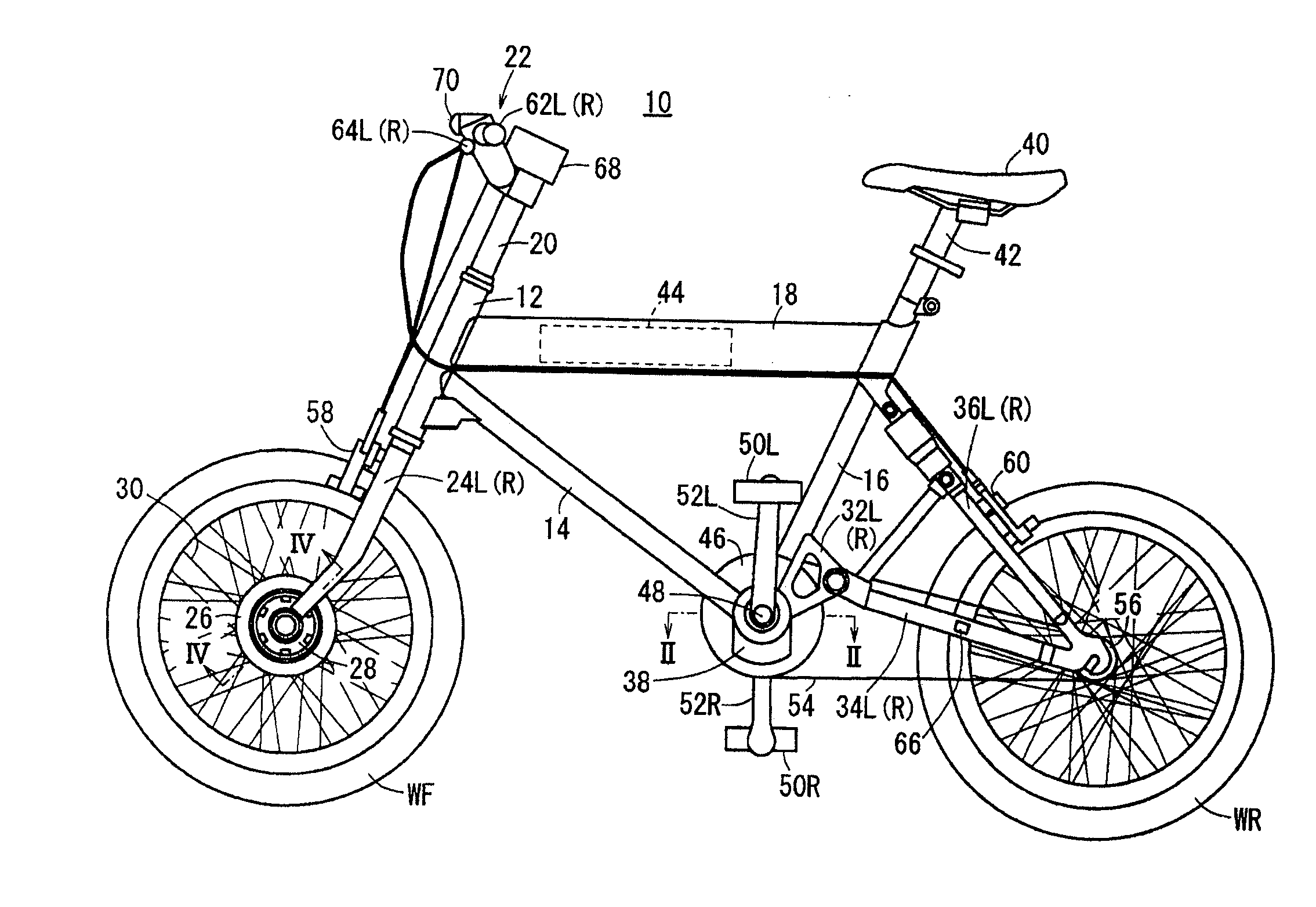Control apparatus for motor-assisted bicycle
a technology of control apparatus and motor, which is applied in the direction of battery/fuel cell control arrangement, electric devices, propulsion by batteries/cells, etc., can solve the problems of not taking into account the way the assistive control process and the regenerative control process are carried ou
- Summary
- Abstract
- Description
- Claims
- Application Information
AI Technical Summary
Benefits of technology
Problems solved by technology
Method used
Image
Examples
modification 1
[0176](Modification 1)
[0177]In the above embodiment, when the control apparatus 250 of the assisted bicycle 10 is inactivated, a difference ΔSOC is calculated, and a ΔSOC correction coefficient corresponding to the calculated difference ΔSOC is acquired from a ΔSOC correction map and stored in the ΔSOC correction coefficient storage area 296 of the storage unit 252. However, when the control apparatus 250 of the assisted bicycle 10 is inactivated, a difference ΔSOC may be calculated and the calculated difference ΔSOC may be stored in the storage unit 252.
[0178]According to Modification 1, in step S24 shown in FIG. 12 and step S45 shown in FIG. 13, a ΔSOC correction coefficient corresponding to the difference ΔSOC stored in the storage unit 252 is acquired from a ΔSOC correction map. The ΔSOC correction map is set such that the ΔSOC correction coefficient is 1.0 if the absolute value of the calculated difference ΔSOC is equal to or smaller than a value which is 5% of the present SOC ...
modification 2
[0180](Modification 2)
[0181]In the above embodiment and modification 1, the controller 108 may store the difference ΔSOC or the ΔSOC correction coefficients which are stored in the storage unit 252, in the memory card 200 mounted in the display unit 68. The memory card 200 which stores the difference ΔSOC or the ΔSOC correction coefficients therein may be removed from the display unit 68 and may be mounted in another assisted bicycle 10. The control apparatus 250 of the other assisted bicycle 10 with the memory card 200 mounted therein may correct the control quantities of the assistive control process and the regenerative control process based on the difference ΔSOC or the ΔSOC correction coefficients stored in the memory card 200.
[0182]Memory cards 200 which store those data can be used as follows: A memory card 200 which stores a difference ΔSOC or ΔSOC correction coefficients therein that are obtained when an assisted bicycle 10 is used by a rider tending to use the assistive mo...
modification 3
[0183](Modification 3)
[0184]In the above embodiment, modification 1, and modification 2, the assistive transient control process is performed while the crankshaft 48 makes one revolution. However, the assistive transient control process is performed while the crankshaft 48 makes a predetermined number of revolutions (e.g., five revolutions). Instead of reducing the transient coefficient each time the crankshaft 48 makes one-half of a revolution (0.5 revolution), the transient coefficient may be reduced each time the crankshaft 48 makes a certain number of revolutions, e.g., one revolution, 1.5 revolutions, etc.
PUM
 Login to View More
Login to View More Abstract
Description
Claims
Application Information
 Login to View More
Login to View More - R&D
- Intellectual Property
- Life Sciences
- Materials
- Tech Scout
- Unparalleled Data Quality
- Higher Quality Content
- 60% Fewer Hallucinations
Browse by: Latest US Patents, China's latest patents, Technical Efficacy Thesaurus, Application Domain, Technology Topic, Popular Technical Reports.
© 2025 PatSnap. All rights reserved.Legal|Privacy policy|Modern Slavery Act Transparency Statement|Sitemap|About US| Contact US: help@patsnap.com



